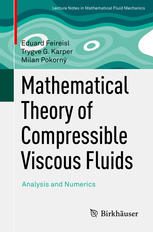

Most ebook files are in PDF format, so you can easily read them using various software such as Foxit Reader or directly on the Google Chrome browser.
Some ebook files are released by publishers in other formats such as .awz, .mobi, .epub, .fb2, etc. You may need to install specific software to read these formats on mobile/PC, such as Calibre.
Please read the tutorial at this link: https://ebookbell.com/faq
We offer FREE conversion to the popular formats you request; however, this may take some time. Therefore, right after payment, please email us, and we will try to provide the service as quickly as possible.
For some exceptional file formats or broken links (if any), please refrain from opening any disputes. Instead, email us first, and we will try to assist within a maximum of 6 hours.
EbookBell Team

0.0
0 reviewsThis book offers an essential introduction to the mathematical theory of compressible viscous fluids. The main goal is to present analytical methods from the perspective of their numerical applications. Accordingly, we introduce the principal theoretical tools needed to handle well-posedness of the underlying Navier-Stokes system, study the problems of sequential stability, and, lastly, construct solutions by means of an implicit numerical scheme. Offering a unique contribution – by exploring in detail the “synergy” of analytical and numerical methods – the book offers a valuable resource for graduate students in mathematics and researchers working in mathematical fluid mechanics.
Mathematical fluid mechanics concerns problems that are closely connected to real-world applications and is also an important part of the theory of partial differential equations and numerical analysis in general. This book highlights the fact that numerical and mathematical analysis are not two separate fields of mathematics. It will help graduate students and researchers to not only better understand problems in mathematical compressible fluid mechanics but also to learn something from the field of mathematical and numerical analysis and to see the connections between the two worlds. Potential readers should possess a good command of the basic tools of functional analysis and partial differential equations including the function spaces of Sobolev type.